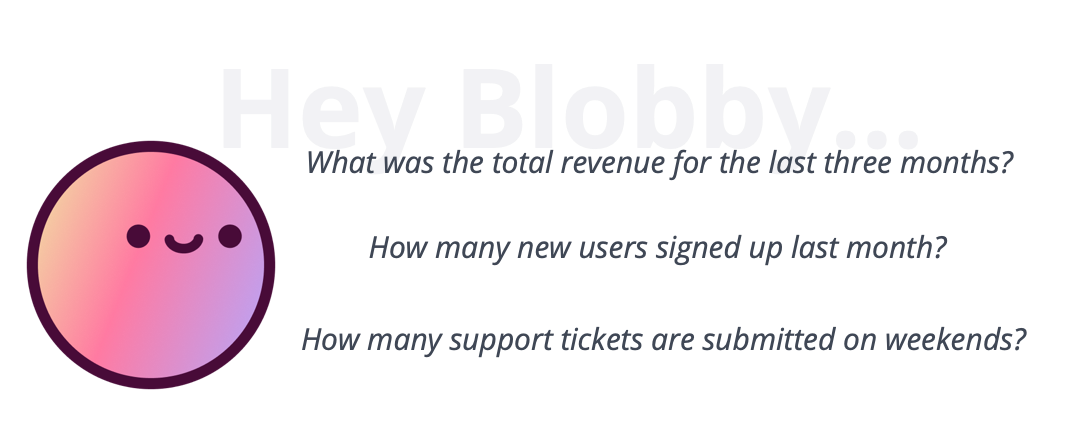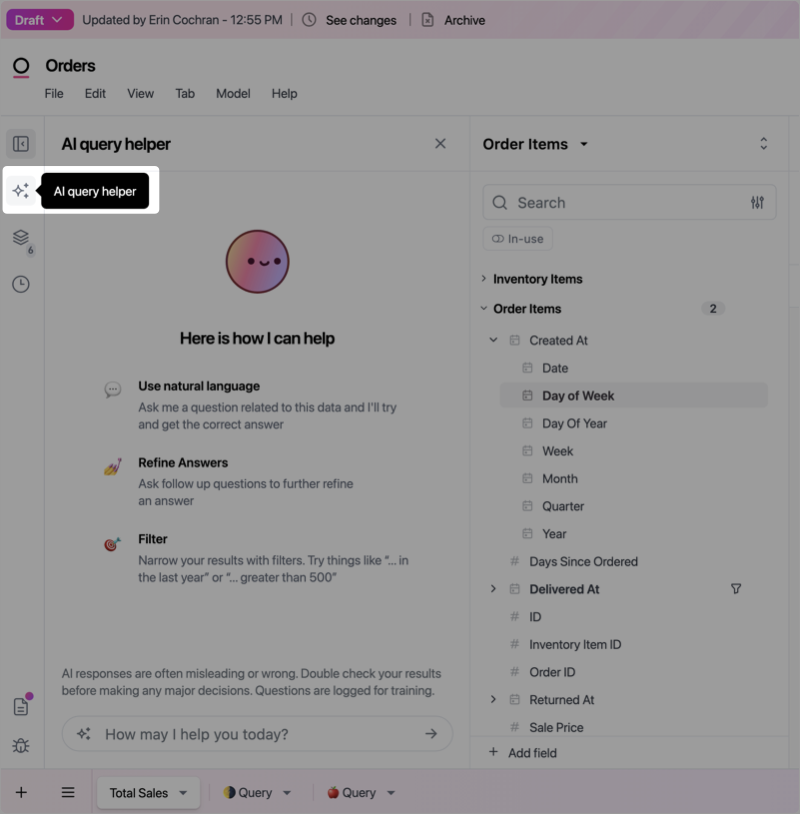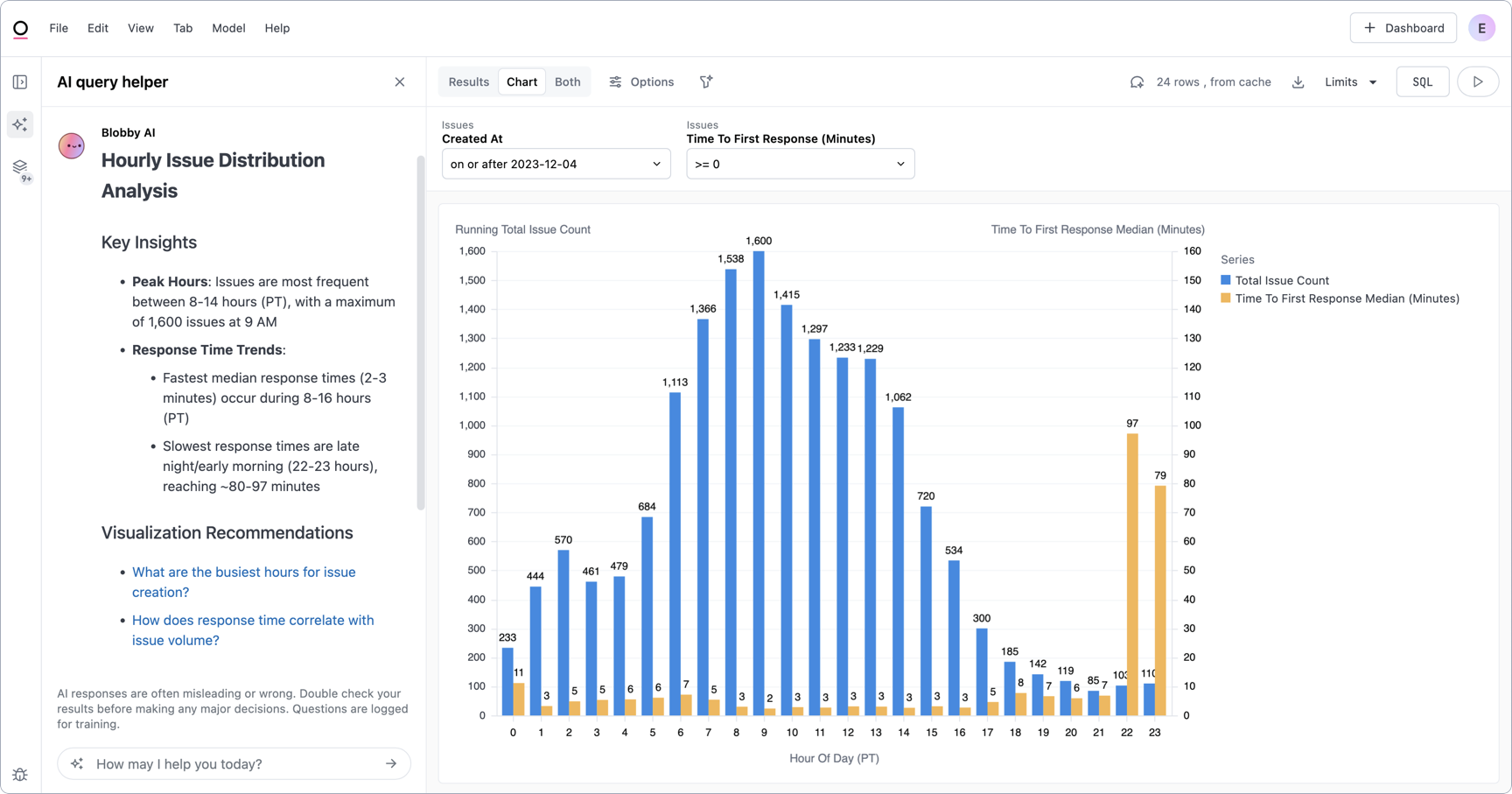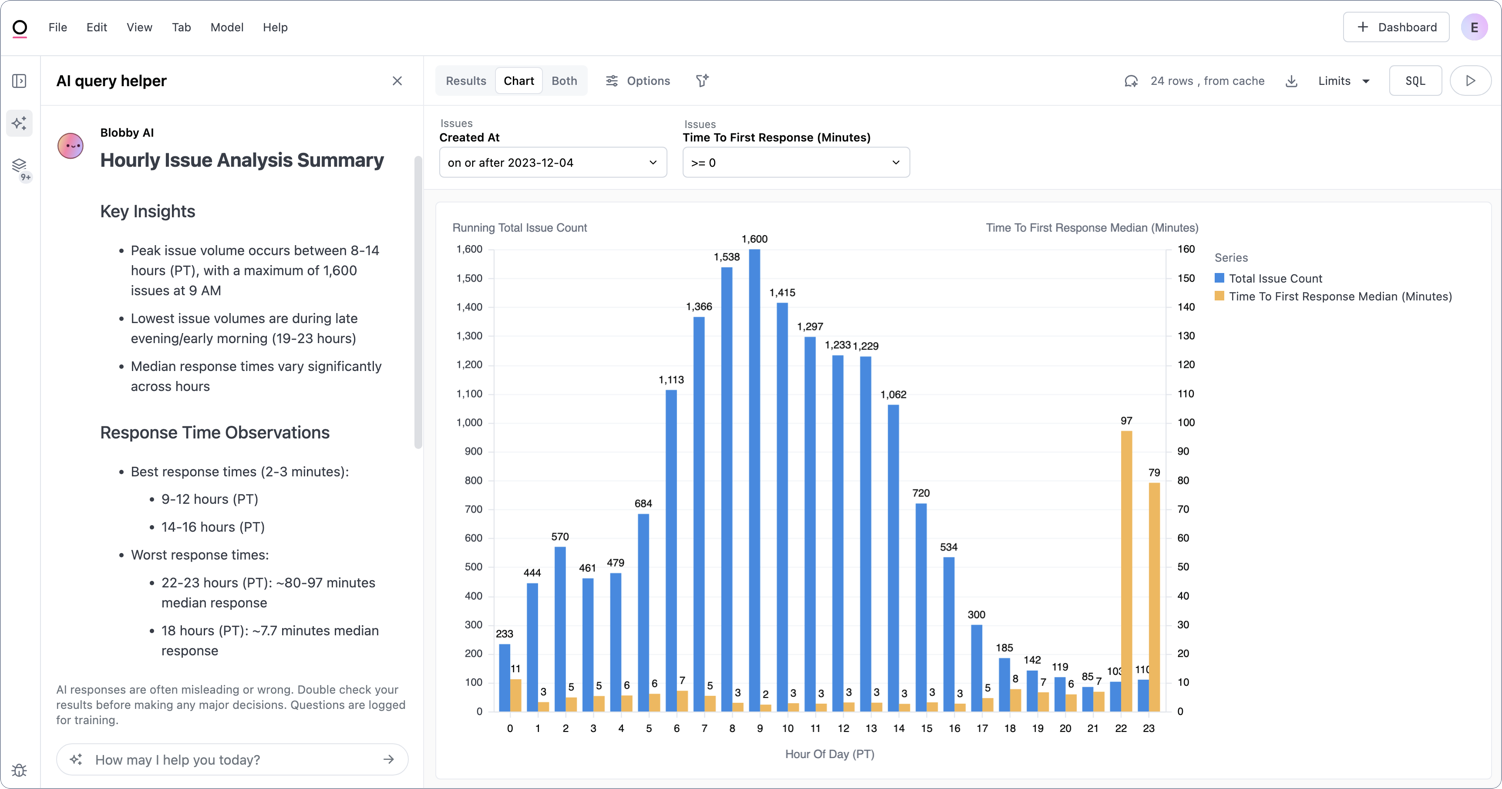Blobby, the AI query helper
This feature requires enabling the Query assistant setting in AI settings.

Generating queries
In a document draft, click the ✨ (three stars) in the left side navigation. A panel will open next to the field picker with some tips about how to use the feature, as well as a text box to ask your first question.
-
Iterate on the questions you ask to provide a more refined result. For example:
- Add totals to results, such as adding a column total that sums a Sale Price measure
- Create new measure fields, such as a Sale Price Average
Creating filters
Make filtering easier by having Blobby create filters for you using natural language. You can describe a filter like Only include orders created on a Saturday or Exclude customers with a status of deactivated and Blobby will automatically apply the filter to the query. To add an AI filter to your query:- Use the query helper window, or
-
Click the starred funnel icon next to the Options button in the Results tab:

Summarizing query results
This feature requires enabling the Query assistant setting in AI settings.
- Describe any anomalies in the data
- Identify insights into trends
- Detail the next steps you should take


View full text response
View full text response
Hourly Issue Distribution AnalysisKey Insights
- Peak Hours: Issues are most frequent between 8-14 hours (PT), with a maximum of 1,600 issues at 9 AM
- Response Time Trends:
- Fastest median response times (2-3 minutes) occur during 8-16 hours (PT)
- Slowest response times are late night/early morning (22-23 hours), reaching ~80-97 minutes
- What are the busiest hours for issue creation?
- How does response time correlate with issue volume?
- Optimize support staffing during peak hours (8-14 hours)
- Investigate reasons for slow response times during late night/early morning
- Consider implementing automated first-response mechanisms during low-staffing periods

View full text response
View full text response
Hourly Issue Analysis SummaryKey Insights
- Peak issue volume occurs between 8-14 hours (PT), with a maximum of 1,600 issues at 9 AM
- Lowest issue volumes are during late evening/early morning (19-23 hours)
- Median response times vary significantly across hours
- Best response times (2-3 minutes):
- 9-12 hours (PT)
- 14-16 hours (PT)
- Worst response times:
- 22-23 hours (PT): ~80-97 minutes median response
- 18 hours (PT): ~7.7 minutes median response
- Investigate staffing during peak hours
- Optimize support coverage for 22-23 hour window
- Understand why 9 AM has highest issue volume
- Adjust support team scheduling
- Implement automated first-response mechanisms
- Analyze root causes of high-volume periods

